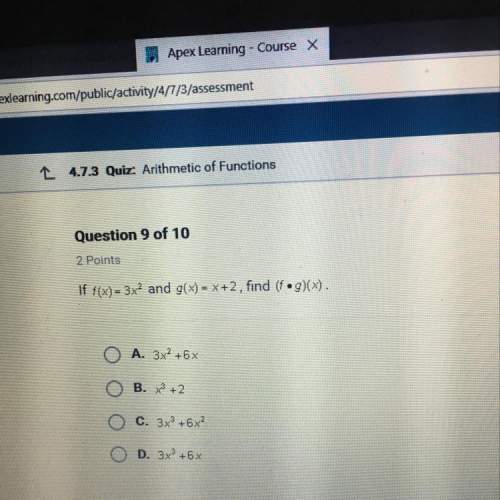
Mathematics, 04.12.2020 21:10 Jc8777
The vertices of ΔGHI are G (2, 4), H (4, 8), and I (8, 4). The vertices of ΔJKL are J (1, 1), K (2, 3), and L (4, 1). Which conclusion is true about the triangles?
They are congruent by the definition of congruence in terms of rigid motions.
They are similar by the definition of similarity in terms of a dilation.
The ratio of their corresponding sides is 1:3
The ratio of their corresponding angles is 1:3.

Answers: 3


Other questions on the subject: Mathematics


Mathematics, 21.06.2019 20:30, rafaelasoareschagas7
W-16=-12 solve each one step equation plz
Answers: 2

Mathematics, 21.06.2019 21:00, Sadaalcala1
Ade and abc are similar. which best explains why the slope of the line between points a and d is the same as the slope between points a and b?
Answers: 2
You know the right answer?
The vertices of ΔGHI are G (2, 4), H (4, 8), and I (8, 4). The vertices of ΔJKL are J (1, 1), K (2,...
Questions in other subjects:



Social Studies, 14.02.2021 01:00



History, 14.02.2021 01:00

Mathematics, 14.02.2021 01:00


Mathematics, 14.02.2021 01:00




